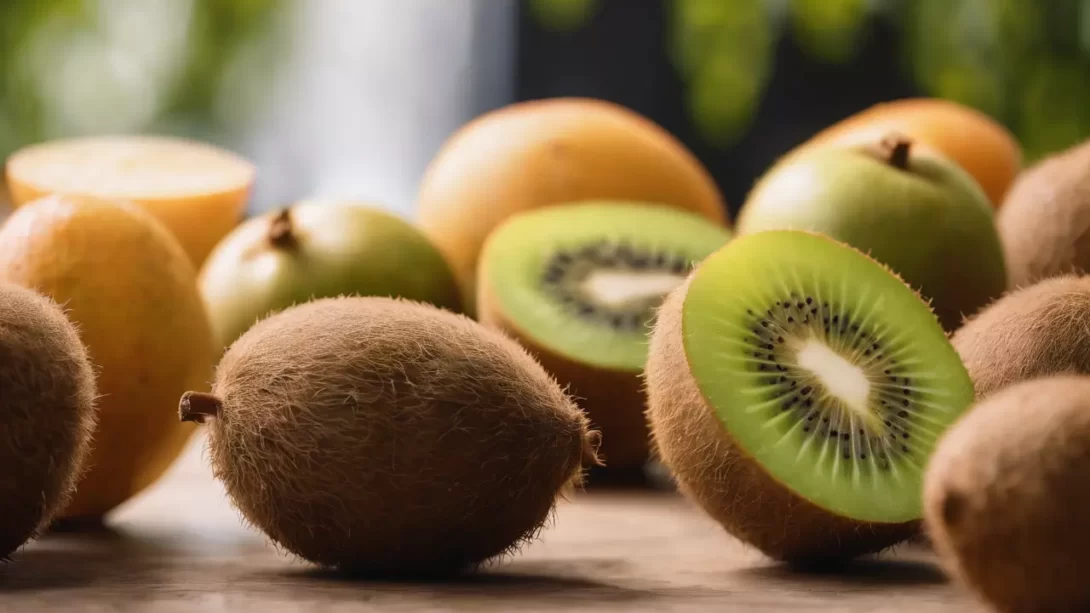Kiwifruit, known for its vibrant green flesh and unique flavor, is a popular choice among fruit lovers. Originating from China and often associated with New Zealand, this small, fuzzy fruit has made its way into kitchens worldwide. People enjoy kiwifruit for its taste and nutritional benefits, but there’s more to this fruit than meets the eye. One aspect that’s often overlooked is its pH level, a key factor that influences not only its taste but also its impact on our health. Understanding the acidity of kiwifruit is essential for those who are mindful of their diet’s pH balance.
What is pH and Why It Matters in Fruits
pH, a scale used to specify the acidity or basicity of an aqueous solution, ranges from 0 to 14. A pH of 7 is neutral, below 7 is acidic, and above 7 is basic. In the context of fruits, pH levels can significantly affect their taste, shelf life, and how they interact with our bodies. Acidic fruits often have a tart or tangy flavor and can be more refreshing, while fruits with higher pH levels tend to be sweeter and less tart. Beyond taste, the acidity of fruits can impact their nutritional value, such as the availability of certain vitamins, and influence how they are digested and metabolized.
Kiwifruit: An Overview of Its Acidity
Kiwifruit typically falls into the category of slightly acidic fruits. Its pH level generally ranges between 3.1 and 3.2, placing it in a similar acidity range as oranges and strawberries. This level of acidity contributes to the kiwifruit’s signature tangy taste and zesty aroma. However, kiwifruit’s acidity is milder compared to more acidic fruits like lemons and limes, which have lower pH values. This milder acidity makes kiwifruit a versatile fruit, suitable for a variety of culinary uses, from fresh salads to sweet desserts. Understanding its pH level helps in knowing how to best pair it with other ingredients to balance flavors and textures in dishes.
Impact of Kiwifruit’s Acidity on Health
The acidity of kiwifruit can have several implications for health. Firstly, the vitamin C content in kiwifruit is high, and its acidic environment helps in preserving this vitamin. This makes kiwifruit a great choice for boosting immunity and skin health. However, for individuals with sensitive stomachs or acid reflux, the acidity might pose some concerns. While kiwifruit’s pH is not as low as some citrus fruits, it’s still important to consume it in moderation if you’re prone to such conditions. Additionally, the enzymes present in kiwifruit, like actinidin, can aid in protein digestion, making it a beneficial addition to meals.
How to Balance the Acidity of Kiwifruit in Your Diet
Incorporating kiwifruit into your diet requires a balanced approach, especially if you’re sensitive to acidic foods. One way to enjoy kiwifruit without upsetting your stomach is to pair it with alkaline or neutral foods. For example, mixing kiwifruit with yogurt or oatmeal can help balance its acidity. Another method is to consume it as part of a larger meal, rather than on an empty stomach, to minimize any potential acidic discomfort. It’s also worth noting that the ripeness of the fruit affects its acidity; riper kiwifruits tend to be less acidic and sweeter, which might be more suitable for those with acid sensitivity.
Cooking with Kiwifruit: Tips and Tricks
Cooking with kiwifruit can be both fun and challenging due to its acidic nature. When using kiwifruit in recipes, it’s essential to consider its impact on other ingredients. For instance, its acidity can curdle dairy products if not handled correctly. To avoid this, mix kiwifruit with dairy ingredients like cream or yogurt shortly before serving. Additionally, kiwifruit’s enzyme actinidin can break down proteins, making it a great natural meat tenderizer. However, this also means that kiwifruit can turn gelatin-based dishes into a liquid, as it breaks down the protein structure of gelatin. Carefully planning when to add kiwifruit to your recipes can leverage its properties for creative and delicious dishes.
Pairing Kiwifruit with Other Ingredients
When pairing kiwifruit with other foods, consider both flavor and acidity. Kiwifruit’s tartness pairs well with sweet fruits like bananas and berries, creating a balanced taste profile. In savory dishes, kiwifruit can add a refreshing zing to salads or salsas, especially when combined with milder vegetables or grains. For a more indulgent approach, kiwifruit pairs beautifully with rich desserts, cutting through the sweetness with its tangy flavor. Experimenting with kiwifruit in different culinary contexts can elevate your dishes, offering both nutritional benefits and exciting flavors.
Storing and Handling Kiwifruit
Proper storage is key to maintaining the quality and taste of kiwifruit. Unripe kiwifruit can be left at room temperature to ripen, which also reduces its acidity over time. Once ripe, kiwifruit should be refrigerated to prolong its shelf life. When preparing kiwifruit, remember that its skin is edible and rich in fiber, though many prefer to peel it due to its fuzzy texture. Slicing kiwifruit for immediate consumption is ideal, as cut kiwifruit can become overly soft and lose some of its vibrant flavors if left exposed to air for too long.
Conclusion
Kiwifruit, with its slightly acidic nature, is a versatile and nutritious addition to any diet. Its unique flavor and health benefits make it a favorite among many. While its acidity is something to be mindful of, especially for those with sensitive digestive systems, kiwifruit can be enjoyed in various forms when balanced correctly in the diet. Whether you’re tossing it into a morning smoothie, using it to tenderize a steak, or simply enjoying it as a fresh, tangy snack, kiwifruit offers a delightful blend of taste and nutrition. Embracing this fruit in your culinary repertoire can add an exciting twist to your meals, making eating healthy both enjoyable and delicious.




